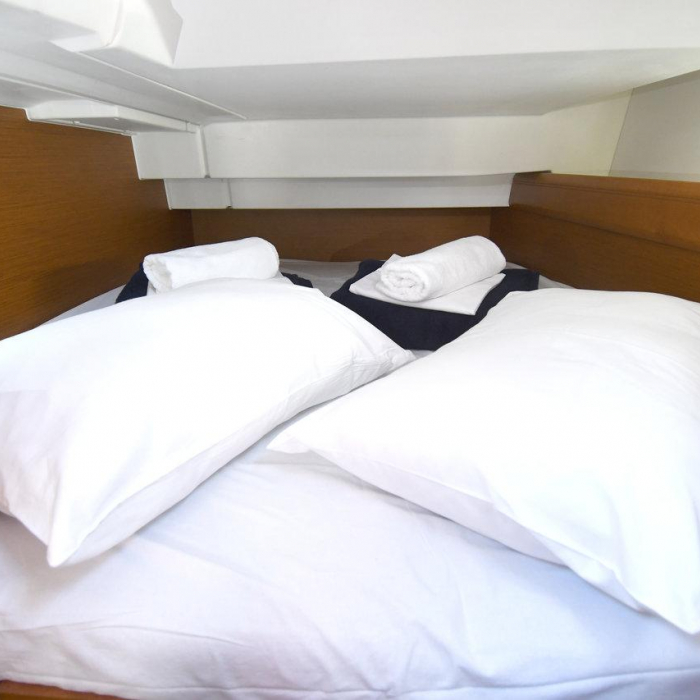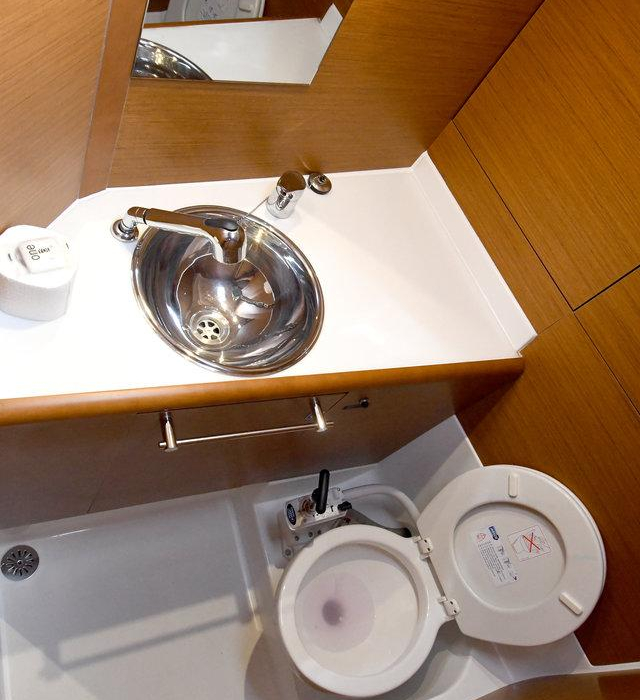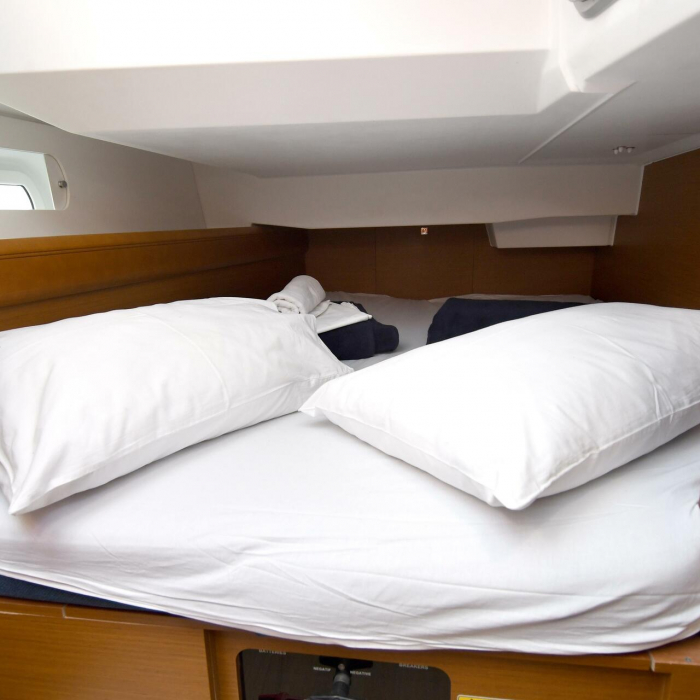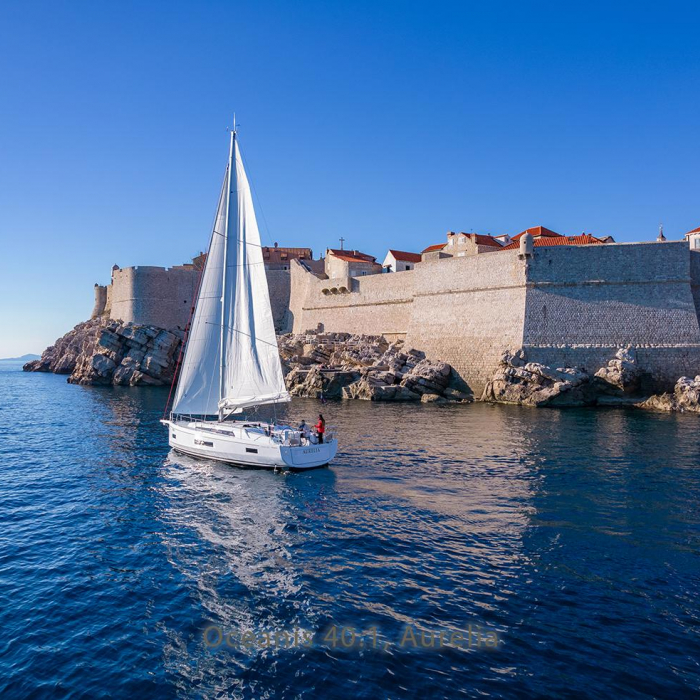Yacht Charter Dubrovnik Region
Euromarine charter

Euromarine charter

Euromarine charter

Sailor's Moon

Euromarine charter

Euromarine charter

Dubrovnik Yachting

Dubrovnik Yachting

Euromarine charter

Euromarine charter

Save to selection
The winds of Dubrovnik Region
Mistral (NW)
The Mistral (NW) winds are a common weather phenomenon in the Dubrovnik Region of Croatia, particularly during the winter months. These winds are caused by a high-pressure system over central Europe, which creates a pressure gradient that forces air to flow towards the lower pressure system over the Adriatic Sea. As the air flows across the sea, it picks up moisture, which is then deposited on the eastern side of the mountain ranges, leaving the western side dry and cold. In the Dubrovnik Region, the Mistral winds can be very strong, with gusts of up to 100 km/h. The Mistral winds have both positive and negative effects on the local environment and economy. On the one hand, they can help to clear away pollution and bring fresher air to the region. They can also have a cooling effect during the hot summer months, providing relief from the heat. On the other hand, the Mistral winds can cause damage to buildings, trees, and crops, and can also disrupt transport links, particularly by sea. In some cases, the winds can also create dangerous sea conditions, making it unsafe for boats to go out to sea. Despite their potential negative effects, the Mistral winds are an important part of the climate and weather patterns in the Dubrovnik Region, and they have shaped the local landscape and culture over time.
Bora (NE)
The Bora wind is a strong and gusty northeasterly wind that affects the Dubrovnik region in Croatia. It is most common during the winter months, but can occur throughout the year. The Bora wind is caused by the high pressure system over Eastern Europe that moves towards the Adriatic Sea, and the low pressure system over the Mediterranean Sea that moves towards the Balkan Peninsula. As the high pressure system moves towards the Adriatic Sea, it forces the air to accelerate through the mountain gaps and down towards the coast. This results in a strong and gusty northeasterly wind that can reach speeds of up to 200 km/h (120 mph) in some areas. The Bora wind can be a dangerous and damaging weather phenomenon, causing damage to buildings, trees, and infrastructure. However, it can also be a welcome relief from the heat during the summer months, bringing in cooler air from the mountains and refreshing the region. Despite its potential dangers, the Bora wind is also an important cultural aspect of the Dubrovnik region, with many local traditions and stories associated with the wind. The people of the region have learned to adapt to the Bora wind and have developed techniques to protect themselves and their property from its effects.
Tramontana (N to NW)
Tramontana winds are a type of dry and cold wind that blows from the north to northwest in the Dubrovnik Region of Croatia. These winds are a common meteorological phenomenon in the Adriatic region and can occur at any time of the year, but they are most frequent during the winter months. The Tramontana winds are the result of the interaction between high-pressure systems over central Europe and low-pressure systems over the Adriatic Sea. As the high-pressure system moves towards the east, it creates a pressure gradient that causes the air to flow from the north to the south, resulting in the Tramontana wind. The Tramontana wind can be quite strong, with gusts reaching up to 100 km/h, and can cause rough sea conditions. However, they are generally short-lived, lasting for a few hours to a day or two. The winds can also bring cooler and drier air, which can be a welcome relief during the hot and humid summer months. Despite their occasional inconvenience, the Tramontana winds are an important part of the local climate and ecosystem. They help to distribute nutrients and oxygen throughout the Adriatic Sea, and they also play a role in shaping the local landscape by eroding the coastline and sculpting the cliffs.
Jugo (SE)
The Jugo (SE) wind is a warm and humid wind that blows from the southeast across the Adriatic Sea towards the Dubrovnik region of Croatia. It is a common wind in this region, particularly during the autumn and winter months. The Jugo wind is associated with low pressure systems that move eastwards across the Mediterranean. As the low pressure system approaches the Adriatic Sea, it creates a pressure gradient which causes the Jugo wind to blow. The Jugo wind can be a strong and gusty wind, and can cause rough seas and high waves in the Adriatic Sea. It can also bring heavy rain and thunderstorms to the Dubrovnik region. The Jugo wind is an important aspect of the climate in the Dubrovnik region, and is celebrated in local culture and cuisine. Some local dishes are specifically prepared to be eaten during the Jugo wind, and it is also a popular time for surfing and other water sports.
FAQ
Free Deposit Pack
With FDP (Free Deposit Pack), you have the chance to avoid a full security deposit and lock in your funds. Just pay 20% upfront (non-refundable), and experience a hassle-free journey. * The price of the FDP rises to 25% if booked less than 30 days before the charter.
































































































































































